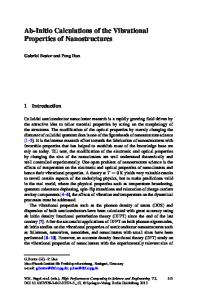Ab initio -guided design of twinning-induced plasticity steels
- PDF / 962,140 Bytes
- 6 Pages / 585 x 783 pts Page_size
- 43 Downloads / 521 Views
Introduction Twins impede dislocation glide. They act as barriers to dislocations, promoting their aggregation and decreasing their mean free path.1–11 Twinning depends on the stacking-fault energy (SFE).12–17 In face-centered-cubic (fcc) alloys, the SFE can be tuned by alloying.18–21 This opens compositional access to “optimal strain-hardening design.”2,11,21–23 This term refers to a state where twins and the associated substructures do not form instantly upon initial yielding, but rather, they form over a wide loading range, so as to enable permanent dynamic reduction of the dislocation free path and hence continuous strain hardening.8 We can apply this design concept to twinninginduced plasticity (TWIP) steels, as described in this article. To understand how strain hardening responds to a change in SFE via alloy tuning, the first step lies in identifying its dependence on composition. With this knowledge, the description of the strain-hardening modes can be rendered chemistry sensitive. The next step is to understand the underlying strainhardening mechanisms. These are twin nucleation and growth,
dislocation cross-slip, and twin–slip, slip–slip, and twin–twin interactions.1,4–8,17 While the first step is accessible to thermodynamic calculations on the basis of ab initio-derived interface energies that can be obtained by density functional theory (DFT) calculations, the second step can be formally rendered by mapping the individual strain-hardening effects into mean field rate equations that are based on internal variables and by coupling the twin nucleation rate to the dislocation substructure and to the SFE. This combination of ab initio-derived thermodynamics and constitutive internal variable models renders this alloy design approach into a multiscale plasticity model where ab initio-derived quantities are linked with constitutive microstructure evolution equations (Figure 1). The constitutive parameters are validated by the measurement of dislocation densities and twin volume fraction fractions using electron channeling contrast imaging (ECCI) and transmission electron microscopy (TEM).2,8,24 Texture and grain size effects are mapped using electron backscatter diffraction.18
Dierk Raabe, Max-Planck-Institut für Eisenforschung, and RWTCH Aachen University, Germany; [email protected] Franz Roters, Max-Planck-Institut für Eisenforschung, Germany; [email protected] Jörg Neugebauer, Max-Planck-Institut für Eisenforschung, Germany; email [email protected] Ivan Gutierrez-Urrutia, National Institute for Materials Science, Japan; [email protected] Tilmann Hickel, Department of Computational Materials Design, Max-Planck-Institut für Eisenforschung, Germany; [email protected] Wolfgang Bleck, Steel Institute, RWTH Aachen University, Germany; [email protected] Jochen M. Schneider, RWTH Aachen University, Germany; [email protected] James E. Wittig, Vanderbilt University, USA; [email protected] Joachim Mayer, Central Facility for Electron Microscopy, RWTH Aachen University, and E
Data Loading...











